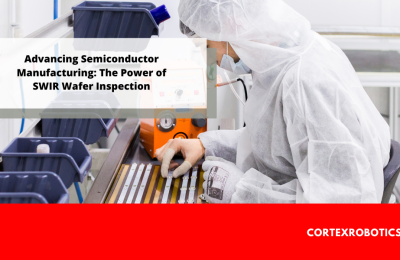The semiconductor industry’s pivotal role in modern technology has led to the creation of electronic devices that revolutionize our lives. With growing demands for faster, more efficient components, manufacturers face escalating challenges in ensuring quality. Among crucial processes, Short-Wave Infrared (SWIR) wafer inspection has emerged as a game-changing technology, enhancing semiconductor manufacturing significantly.
Silicon wafers, which serve as the substrate for chip fabrication, undergo numerous complex processes during manufacturing, including photolithography, etching, and doping, among others. Any defects or impurities introduced during these steps can severely impact the performance and yield of the final semiconductor devices. Traditionally, optical inspection techniques have been employed to detect defects, but as the semiconductor industry scales down to smaller nodes and introduces novel materials, traditional optical inspection has its limitations.

This is where SWIR wafer inspection comes into the picture. SWIR imaging utilizes wavelengths in the range of 1.0 to 2.5 microns, which lies between the visible and thermal infrared regions. This unique wavelength range offers several advantages over traditional inspection methods, making it a breakthrough technology in the semiconductor manufacturing process.
One of the key advantages of SWIR wafer inspection is its ability to detect and characterize defects that are challenging to capture with visible light or other inspection techniques. Silicon wafers are often transparent in the SWIR range, which means that defect signals can pass through the wafer, making them visible to the inspection equipment. This characteristic is particularly valuable when inspecting silicon wafers with multi-layer structures or when examining non-silicon materials like silicon carbide and gallium nitride, which have become more prevalent in advanced semiconductor devices.
Furthermore, SWIR inspection provides enhanced sensitivity to defects, allowing manufacturers to identify and address even subtle imperfections that could otherwise escape detection. This heightened sensitivity aids in improving overall product yield and reducing waste during the manufacturing process, resulting in cost savings for semiconductor manufacturers.
Another significant advantage of SWIR wafer inspection is its compatibility with existing manufacturing infrastructure. Manufacturers can integrate SWIR inspection systems seamlessly into their production lines without major disruptions, which accelerates the adoption and implementation of this powerful technology.
Additionally, SWIR imaging allows for rapid and automated inspection processes. This capability is crucial as the semiconductor industry strives for higher throughput to meet the ever-increasing demand for electronic components. By reducing inspection times, SWIR technology contributes to streamlining production cycles and helps manufacturers maintain their competitiveness in the global market.
The benefits of SWIR wafer inspection extend beyond defect detection. It also aids in process monitoring and optimization. By obtaining valuable real-time data during the manufacturing process, engineers can make informed decisions to improve yield, increase efficiency, and minimize production costs.
Moreover, SWIR technology can be utilized beyond wafer inspection. It finds applications in inspecting packaging materials, identifying counterfeit products, and monitoring the temperature of electronic devices, among other uses.
In conclusion, SWIR wafer inspection has emerged as a game-changing technology in semiconductor manufacturing. Its ability to detect defects in challenging materials, enhanced sensitivity, compatibility with existing infrastructure, and rapid inspection capabilities make it a powerful tool for ensuring the quality and reliability of semiconductor devices. As the semiconductor industry continues to advance, SWIR wafer inspection will play a critical role in driving innovation and pushing the boundaries of what is possible in modern electronics.
For more information about SWIR wafer inspection, please visit https://cortexrobotics.my/















